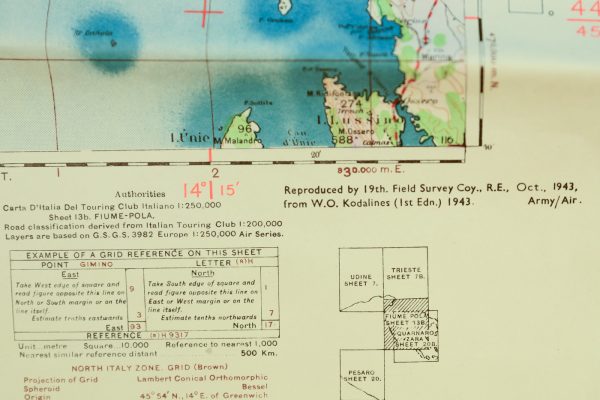
Italian Authorities Confiscate Over 2,000 Artworks in Connection with Major Art Forgery Ring

### Italian Police Uncover Major Art Forgery Ring, Seize Over 2,100 Counterfeit Works
**A 22-month investigation reveals an international forgery operation involving fakes attributed to world-famous artists like Banksy, Warhol, and Picasso.**
Italian authorities have dismantled a vast network of art forgers following the seizure of over 2,100 counterfeit artworks. Dubbed **Operation Cariatide**, the investigation, which began in March 2023, resulted in the identification of 38 individuals involved in the operation. The fakes, attributed to celebrated artists including **Banksy, Andy Warhol, Pablo Picasso, and Jean-Michel Basquiat**, among others, could have fetched over €200 million (~$212.5 million) if sold on the open market.
According to the Italian police force **Carabinieri**, the investigation kicked off when law enforcement seized around 200 counterfeit contemporary artworks from a Pisan entrepreneur. The seized collection included a drawing that had been fraudulently attributed to famed Italian artist **Amedeo Modigliani**. This initial discovery sparked a deeper investigation into a larger web of counterfeit production, leading to consistent monitoring and collaboration with auction house websites to track similar fraudulent works.
### The Scale of the Operation
As the investigation deepened, police found that **copycat versions of artworks by a range of iconic artists**—including **Joan Miró, Francis Bacon, Wassily Kandinsky, Piet Mondrian, Gustav Klimt, Paul Klee, and Vincent van Gogh**—were being sold at cut-rate prices through various avenues, including auction houses and galleries.
One of the most shocking revelations was the discovery of three **forgery workshops** situated in **Tuscany and Veneto, Italy**, responsible for producing the counterfeit works. These sites contained **hundreds of falsified certificates** and stamps designed to “authenticate” the fake pieces before entering the market. Investigators also uncovered an intricate ring of collaborators operating out of **Spain, Belgium, and France**, who facilitated the sale of the forgeries in and outside Italy.
### Auction House Fraud and Low-Quality Fakes
The forgery ring thrived on the sale of high-profile artworks at astonishingly low prices, artificially flooding the market with fake pieces. For example, three paintings falsely attributed to **Wassily Kandinsky, Paul Klee, and Piet Mondrian** (artists whose works are typically sold for tens of millions at international auctions) were being auctioned at a mere **€4,000 (~$4,249)** each.
The investigation also revealed a significant reliance on **fake Banksy and Warhol pieces**, artists whose works are among the most replicated in the art world today. This surge of forged works hints at forgery operations larger than initially expected, with possible links to major exhibitions and institutions.
### Museums and Galleries Affected
The forgeries didn’t just deceive private collectors and auction houses—they also entered public spaces, including prestigious exhibitions. In **March 2024**, the **Museo M9 Mestre** in Venice fell under scrutiny after two works presented in its **”Banksy: Painting Walls”** exhibition were discovered to be fake. Organized by the cultural group **MetaMorfosi**, the exhibition had unknowingly displayed these low-quality counterfeit pieces until art experts flagged the issue. The works were later removed and handed over to investigators after **Stefano Antonelli**, a Banksy authority, filed a legal complaint asserting their inauthenticity.
### A Global Concern
The growing issue of counterfeit art presents both a cultural and financial threat to the art world. Forged artworks not only deceive buyers, but they also dilute the prestige and historical value attached to genuine works.
In light of these developments, the **Carabinieri** and the **Pisan public prosecutor’s office** expressed concern that some unforged works might have already infiltrated leading galleries and collections, further complicating efforts to preserve the authenticity and legacy of renowned artists.
### The Next Steps
Although 38 individuals have been identified in connection with the forgery ring, none have been formally charged yet, pending the ongoing investigation. Authorities continue to root out forgeries in both physical and online marketplaces, emphasizing the need for stricter verification processes in auction houses and galleries worldwide.
This case highlights the vulnerabilities in the art market and the importance of vigilance among collectors, curators, and institutions to prevent similar schemes from duping art lovers and investors alike.
### Final Thoughts
The dismantling of this international art forgery ring serves as a reminder of the critical role that law enforcement, art institutions, and independent experts play in safeguarding cultural heritage. As art forgery continues to evolve globally, the hope is that measures put in place will better spot and stop these operations before counterfeit works tarnish the legacies of iconic artists.
In the meantime, collectors and art connoisseurs are urged to double-check provenance records, consult with recognized art authorities